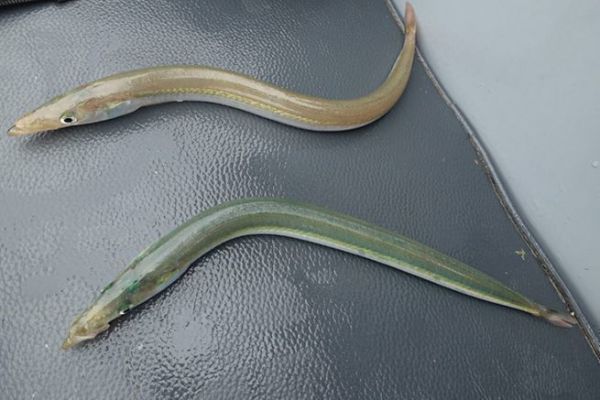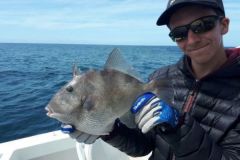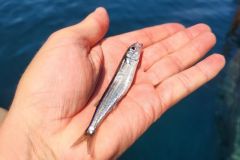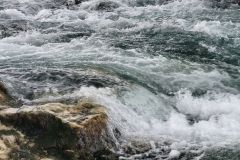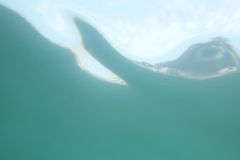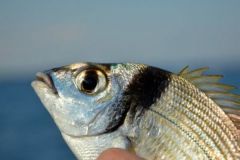Scientific name
Seven species of sandeels and eels are found along the French coast.
- Common sandeel : Hyperoplus lanceolatus (Le Sauvage, 1824)
- L'équille du large : Ammodytes marinus (Raitt, 1934). Sometimes also called sandeel, which can lead to confusion.
- North sandeel: Ammodytes dubius (Reinhardt, 1837)
- Sandeel jolivet: Hyperoplus immaculatus (Corbin, 1950)
- Sandeel: Ammodytes tobianus (Linné, 1758)
- Atlantic squid: Gymnammodytes semisquamatus (Jourdain, 1879)
- The sandeel or cicerelle Mediterranean : Gymnammodytes cicerelus (Rafinesque, 1810)
Morphology
Sandeels and eels are serpentine fish. If you look closely, you can see tiny scales on their backs. They have no pelvic fins or gas bladder. The color of these slender little fish varies from green to dark blue on the back, while the belly is silvery.
Fishing spots
Sand eels and sand eels bury themselves in the sand or gravel when there's a current, on beaches and offshore ridens alike. They can also be found around shipwrecks, which are rich in food. Lastly, they can be found in harbors and estuaries in summer, where they sometimes swim on the surface in shoals of dozens or even hundreds of individuals. At least one of the 7 species listed above can be found throughout France.
Fishing techniques
Sandeels and eels are fun fish to catch. Their playful pursuit is perfect for introducing children to summer sea fishing. They are sometimes caught for frying inshore between April and July. They can be found at depths of between 1 and 5 metres, at the foot of harbour structures. They are also caught live for larger predators such as sea bass and pollack. From the boat, we waddle over the sandy ridens at slack water. Ideal nibs include 0.25 mm nylon and hook sizes n°6 to 10, but no larger. A wobbling spoon below the nib set makes it ultra-efficient. Remove the treble hook from the spoon to avoid snagging on the bottom.
Reproduction
The breeding season varies from May to September, depending on the species. Eggs are laid on the sand and the larvae drift away.
Size and weight
- Catch size (legal minimum): none, I recommend 11 cm
- Size at sexual maturity: 11 cm
- Average size: 6 to 18 cm
- Maximum size/weight: 40 cm
Good to know
If a shoal of sand eels follows the line to the boat, before taking the fish out of the water, put another set of feathers in the water to fish the shoal and keep it at the boat, and so on.

 /
/ 